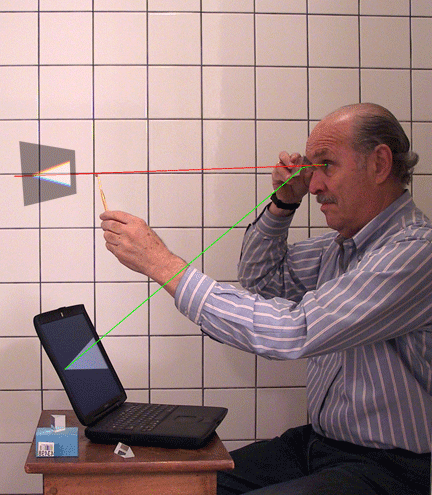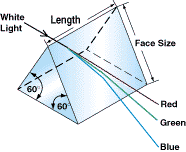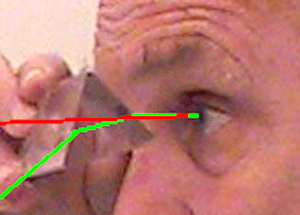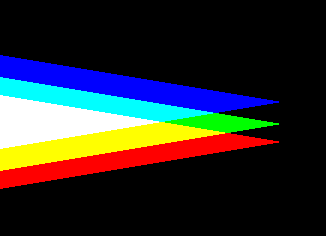

If you look at a white wedge diagram through a prism, the light rays bend on the way to your eye. This is shown by the green line in the diagram below. The virtual image of the wedge appears to be opposite the point where the light ray enters the eye, shown by the red line on the diagram.

A prism bends light rays. Different colors bend different amounts.


Compare the prism diagram to the detail of the photo above. The virtual image of the wedge that appears through the prism is formed where the green rays from the origin image are bent by the prism.
The virtual image looks like this:

Red light is bent less than green light, so the wedge has a red band along the bottom edge. Blue light is bent more than green, so the wedge has a blue band along the top edge. The center of the wedge appears white, because the red and blue light areas overlap the green light area in the center of the wedge to form new white light. The white light from the origin is separated into separate red, green and blue wedges and then recombined to form white light again.
The fact that the center of the wedge appears where the green light is bent can be seen clearly in this detail of the tip of the virtual wedge.

Do you have a prism handy? Please observe the wedge diagram below through the prism and then send me an email to percept@csulb.edu
